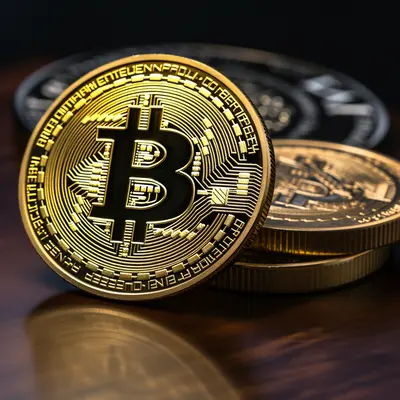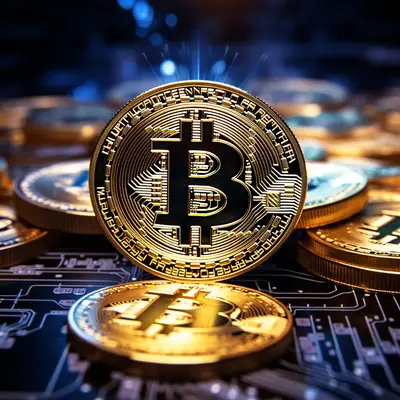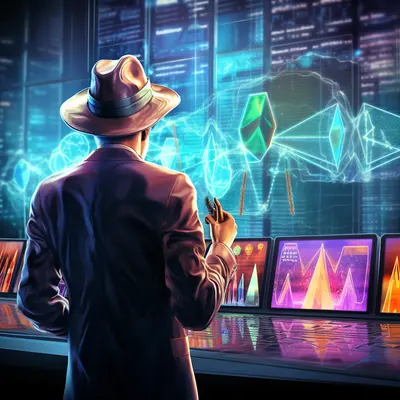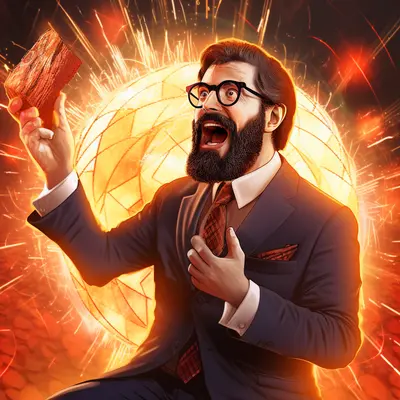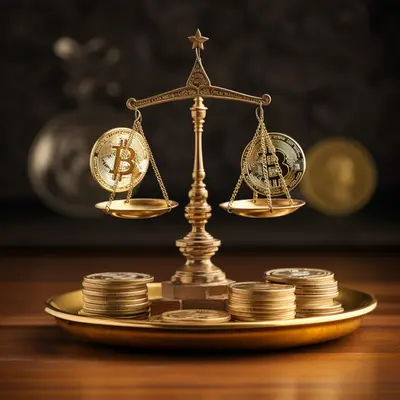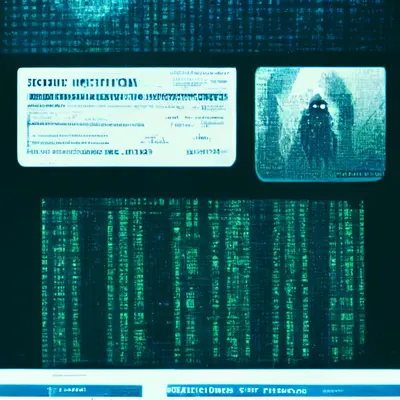Who is Satoshi Nakamoto? Bitcoin witch and the mask that has not been removed
Who is Satoshi Nakamoto? The article will provide interesting information about Satoshi Nakamoto, the process of giving birth to Bitcoin of this mysterious character.
On the day before Thanksgiving in 1971, a 40-year-old man alias DB Cooper boarded a flight in Oregon, USA, and told the crew that his briefcase contained bombs. After demanding $1.2 million in ransom, he parachuted out of the plane and disappeared. No one has ever removed the "mask" of this notorious hijacker.
Nearly 40 years later, in 2009, a figure claiming to be a 36-year-old Japanese man appeared on a financial world flight. But instead of stealing money, this person "left" 21 million Bitcoins, then "parachute" disappeared into cyberspace. More than a decade has passed, but efforts to decipher this character's identity are still at a standstill. That character is Satoshi Nakamoto.
Who is Satoshi Nakamoto?
Satoshi Nakamoto is the self-proclaimed name of a person (or group) who created Bitcoin and gave birth to the first blockchain of the same name. Satoshi was very active in the development of Bitcoin until his disappearance in December 2010.
Although Satoshi Nakamoto has a very "Japanese" name and also claims to be Japanese, most speculation about Satoshi's true identity involves software or cryptography experts in the US or Europe.
Inventing money - The creator of his own way
To get money, most of us have to work hard, some more reckless people fake or steal money, but Satoshi Nakamoto chose his own path: inventing money. On the evening of January 3, 2009, Satoshi pressed a button on his keyboard and created a new currency called Bitcoin. No paper, copper or silver - it's all just 31,000 lines of code and an Internet message.
Satoshi's invention is dubbed "digital gold" because it consists of only 21 million Bitcoins. Miners “mine” Bitcoin using computers to solve complex mathematical problems. The fastest computer will win the most Bitcoins.
At first, a Bitcoin was valued at less than 0.01 USD, but merchants gradually began to accept the new coin, and by the end of 2010, its value began to increase rapidly.
The first real-world Bitcoin transaction took place on May 22, 2010, when a man from Florida agreed to exchange two pizzas worth $25 for 10,000 Bitcoins, and the day "Bitcoin Pizza" was born. from this event. Since then, the value of this coin has increased exponentially.
If Satoshi runs the world…?
The fact that Satoshi hides under the cloak of anonymity makes many people question whether the creator of Bitcoin is the head of a Ponzi scheme . But it seems that Satoshi was motivated by politics rather than crime.
It is no coincidence that Bitcoin was born shortly after the 2008 crisis, when the world financial markets were hit hard by the collapse of the global banking sector. After the bank was "too big to fail" Lehman Brothers filed for bankruptcy, Satoshi published an essay on traditional currencies.
“ The root problem of conventional currency is that it needs trust to work ,” Satoshi wrote. “ Central banks are trusted not to devalue currencies, but the history of fiat money is rife with offenses against that trust .”
If he ran the world, Satoshi would fire the Chairman of the US Federal Reserve, close the European Central Bank and shut down international fast money transfer services. Because in Satoshi's new monetary system, the central bank and the government play no role at all.
The blockchain Satoshi created allows people to send money directly to each other without intermediaries and no other party can generate more Bitcoins. “Everything is based on cryptographic proof instead of trust ,” Satoshi wrote in a 2009 essay.
And in order to “remember” the manipulation of fiat currency, in the first transaction made on the Bitcoin blockchain, the mysterious founder “dipped” a message: “The Times 03/Jan/2009 Chancellor on the brink of second bailout for banks”.
The message referred to the headline of an article that appeared that day in The Times in the UK about a second bailout for banks, indicating that the UK government had failed to stimulate the economy.
Test of the famous person in the hacker world
Currently, despite the absence of "mother", Bitcoin still asserts its value, but at the time of its birth, this currency was the target of "tests" of reliability.
When it turned two years old, in early 2011, Bitcoin fell on the radar of Dan Kaminsky, a leading researcher in Internet security. He claims to investigate this coin and definitely find its main weaknesses.
Kaminsky is well known among hackers for discovering in 2008 a fundamental vulnerability in the Internet that could allow a skilled coder to take control of any website or even shut down the Internet.
He alerted the US Department of Homeland Security as well as Microsoft executives to the issue and worked with them to fix the bug. He is also one of the most adept masters of "penetration testing" - exposing computer systems to their vulnerabilities. Kaminsky feels Bitcoin is an easy target.
“ The first time I looked at Bitcoin's code, I was sure I could crack it ,” said Kaminsky, commenting that Bitcoin's programming style is dense and confusing. “ The whole thing is insanely structured. Only the most industrious, paranoid coders in the world can make no mistake on this system, ” he added.
In a windowless basement full of computers in San Francisco, Kaminsky paced back and forth talking to himself, trying to picture the Bitcoin network in his head. He quickly identified nine ways to infiltrate the system and find the first attack insertion point.
But when he found the right place, a message was waiting: “Attack Removed”. Kaminsky tried other places, but the same thing over and over made him very angry.
He was like a thief who was sure he could break into a bank by tunneling, drilling, cutting, or climbing down a vent, but every time he tried he discovered a freshly poured cement fence with a sign. advised him to go home. " I've never seen anything like it ," Kaminsky said in amazement.
He pointed out the skills that Satoshi needed to be able to successfully build Bitcoin. “ He is a world-class programmer, with a deep understanding of the C++ programming language,” says Kaminsky . “He understands economics, cryptography, and peer-to-peer networking. Either there's a bunch of people who've done this, or this guy is a genius ."
Kaminsky is not alone in this assessment. Shortly after creating the new currency, Satoshi posted a 9-page technical paper describing how Bitcoin works. That document includes three references to the work of Stuart Haber, a researcher at HP Labs in Princeton.
Haber is the director of the International Association for the Study of Cryptography and he knows all about Bitcoin. “ Whoever does this has a deep understanding of cryptography ,” Haber said. " They've read scholarly papers, they've got sharp intelligence, and they're incorporating concepts in a whole new way ."
Rejecting the title of "world-changer"
The value of Bitcoin has added many zeros, but Satoshi's identity has so far only been a round zero. Before Bitcoin was born, there was no record of any programmer by that name. Satoshi used an untraceable e-mail address and website. In 2009 and 2010, this mysterious figure published hundreds of articles in perfect English, and though he chatted with other software developers asking them to help improve the code, Satoshi never divulged any information. any personal information.
All of a sudden, in April 2011, Satoshi sent a message to a developer saying that he " switched to do other things ". Quietly, the masked Bitcoin wizard waved his cloak and disappeared into the cyber night like the super thief Kaito Kid in the famous Detective Conan series.
Bitcoin is known as the world-changing invention, and of course the creator of Bitcoin automatically inherits that title, is crowned and honored. In today's tech world, that means money, power, and attention.
As the creator of money, Satoshi probably doesn't care about having more money, but power and attention are irresistible charms. So why did Satoshi refuse that privilege, agreeing to be a quiet person who doesn't know the devil or not?

Some people think this is a marketing trick, because mysterious things always attract people's curiosity and entice them to join. But it's been 13 years since Bitcoin was born, if the founder's anonymity is a gimmick, this campaign has gone on too long and is no longer needed.
Perhaps Satoshi has a better reason to hide his identity: those who experiment with money, thereby "desecrating" the sacred ground of institutions, often pay a price.
In 1998, a Hawaiian named Bernard von NotHaus began making silver and gold coins that he called "Liberty Dollars". Nine years later, the US government charged NotHaus with "conspiring against the United States".
He was found guilty and brought to trial. “ It is a violation of federal law for individuals to create private coins or monetary systems to compete with U.S. mints and official currency ,” the FBI announced at the conclusion of the trial.
Online currency is no exception. In 2007, the US federal government filed charges against e-Gold, which sold a digital currency that could be exchanged for gold. The government argues that the project facilitates money laundering and child pornography, as users do not need to provide thorough identity verification. As a result, the company owner was found guilty of operating an unlicensed money transfer business and the CEO was sentenced to months of house arrest. The company quickly "closed the shop".
Satoshi seems to be doing the same thing as other currency developers who are on the run from the authorities. Satoshi competes with the dollar and ensures user anonymity, which makes Bitcoin attractive to criminals. In the winter of 2011, a website called Silk Road was born, allowing users to buy and sell heroin, LSD, and marijuana as long as they paid with Bitcoin.
But Lewis Solomon, a professor emeritus at George Washington University Law School who studies alternative currencies, argues that creating Bitcoin could be legal. “ Bitcoin is in the gray zone, in part because we don’t know whether to view it as a currency, a commodity like gold or even an n-security,” he said.
However, the gray area is dangerous, which could be the reason why Satoshi created Bitcoin secretly. It could also explain why Satoshi built the code with the same peer-to-peer technology that facilitates the exchange of “piracy” movies and music: users connect to each other instead of to a central server. No company to control, no office to raid, and no one to arrest.
The investigation of the "Sherlock Holmes"...
If the talented detective Sherlock Holmes stepped out of the series of Arthur Conan Doyle, would he be able to solve the case of the identity of the "Bitcoin Wizard"?
While filling the imagination with the clash between these two transcendent minds, the real-life “Sherlock Holmes” actively gathered “evidence” about the character Satoshi Nakamoto. The investigation has drawn in the tech community, programmers and even reporters from major US newspapers.
We invite you to read these "investigation" in the article: Unmasking the Bitcoin Witch: When the "Sherlock Holmes" Entered
Sep 29, 2022



